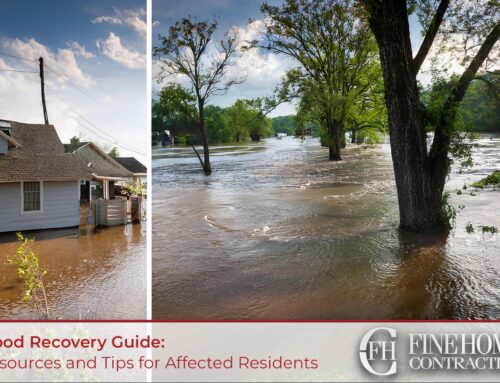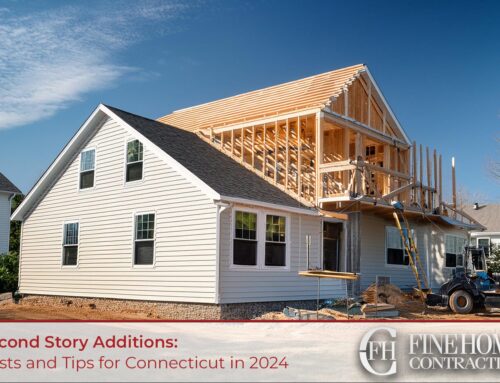Property taxes are a significant expense for homeowners across the United States, and Connecticut has some of the highest property tax rates in the country. According to a 2024 analysis by Forbes, Connecticut residents pay the 3rd highest property taxes nationally, with an average annual property tax bill of $8,692. However, property tax rates can vary significantly from town to town in Connecticut due to differences in mill rates and property values. This article will explain how mill rates work in Connecticut and provide an overview of property tax rates across different cities and towns.
What is a Mill Rate?
In Connecticut, a mill rate is the amount of tax paid per $1,000 of assessed property value. Assessed value refers to 70% of the property’s fair market value, which is determined by the town assessor. For example, a home with a market value of $300,000 would have an assessed value of $210,000 ($300k x 0.7). If the mill rate is 30, then the annual property tax on that home would be $6,300 ($210,000 / $1,000 x 30).
Mill rates are expressed as the number of dollars in taxes per $1,000 of assessed value. So a mill rate of 35 means a property owner pays $35 in taxes for every $1,000 of assessed property value. Mill rates provide a standardized way to calculate and compare property taxes across different towns in Connecticut, regardless of whether home values are higher or lower.
How Mill Rates Are Calculated
Connecticut municipalities determine their mill rates annually based on the revenue needed to fund their annual budgets. Town officials estimate the total value of taxable property and then set a mill rate that will generate the required revenue from property taxes when applied to those total assessments.
If a town needs $10 million in property tax revenue and the total assessed value of taxable property is $1 billion, the mill rate would need to be 10 mills to generate that $10 million. If property values rise, the mill rate can be reduced to bring in the same revenue. And if the budget increases, the mill rate may need to increase as well.
So mill rates go up and down each year in response to fluctuations in property values and municipal budget needs. Towns are not allowed to bring in more tax revenue by raising mill rates; voter approval is required for budgets that represent a 2.5% or greater increase in the total tax levy.
Variation in Mill Rates Across Connecticut
There is significant variation in mill rates across Connecticut, leading to large differences in property tax bills. For 2022, mill rates range from a low of 11 in Greenwich and Salisbury up to a high of 90.35 in the Torrington Lakeridge Tax District.
Some of the major factors that influence mill rates in Connecticut towns include:
Property values – Towns with higher home values can generate the same revenue with lower mill rates. Lower-value towns need higher rates.
Municipal services – More services, better schools, and greater infrastructure raise budgets and mill rates.
Tax base – Towns with larger commercial tax bases can lower the burden on residents.
As a result, affluent communities like Greenwich and Darien have very low mill rates, while middle-class suburbs often have moderately high rates. Cities like Hartford and Bridgeport have among the highest mill rates in the state.
Here are some examples of 2022 mill rates in various Connecticut municipalities:
Greenwich – 11.39
West Hartford – 41.04
Bristol – 35.26
Meriden – 47.28
Hartford – 74.29
So a home valued at $300,000 would face widely different tax bills:
Greenwich – $3,417
West Hartford – $12,312
Bristol – $10,578
Meriden – $14,184
Hartford – $22,287
Vehicle Taxes
In addition to real property, Connecticut municipalities levy taxes on motor vehicles at mill rates up to 32.46. Any town with a mill rate above 32.46 is reimbursed by the state for the difference. So while real property tax rates vary significantly, motor vehicle owners pay much more consistent vehicle taxes across the state.
Additional District Taxes
Some towns in Connecticut have additional tax districts on top of the base municipal mill rate. For example, West Haven has three independent fire districts that charge additional taxes to fund the local fire departments. Fire district mill rates in West Haven range from 10.29 to 11.70.
So a West Haven resident ends up paying the base municipal tax plus the extra fire district tax, resulting in a higher total effective tax rate. Connecticut towns with multiple independent tax districts include Greenwich, New London, and Stonington.
Property Tax Relief Options
Connecticut does offer some relief programs that can help lower property tax bills for qualifying residents:
Homeowners Tax Credit – This provides tax relief for elderly or disabled homeowners below certain income limits proportional to tax amounts.
Local Option Tax Relief – Many municipalities provide property tax cuts for elderly homeowners or veterans.
Tax Freeze for Elderly – This froze tax bills for residents over 70 who meet income limits. Still available for existing recipients.
Tax Deferral – Allows taxpayers 65 and older to defer property tax payment until the home is sold.
Conclusions
While property taxes in Connecticut are high compared to national averages, the exact amount owed varies greatly depending on where you live. Mill rates account for those differences by showing the tax rates per $1,000 of assessed home value. Understanding mill rates helps explain why tax bills are lower in Greenwich versus Hartford. And knowing how mill rates work provides background when comparing property taxes across different Connecticut towns and cities.







